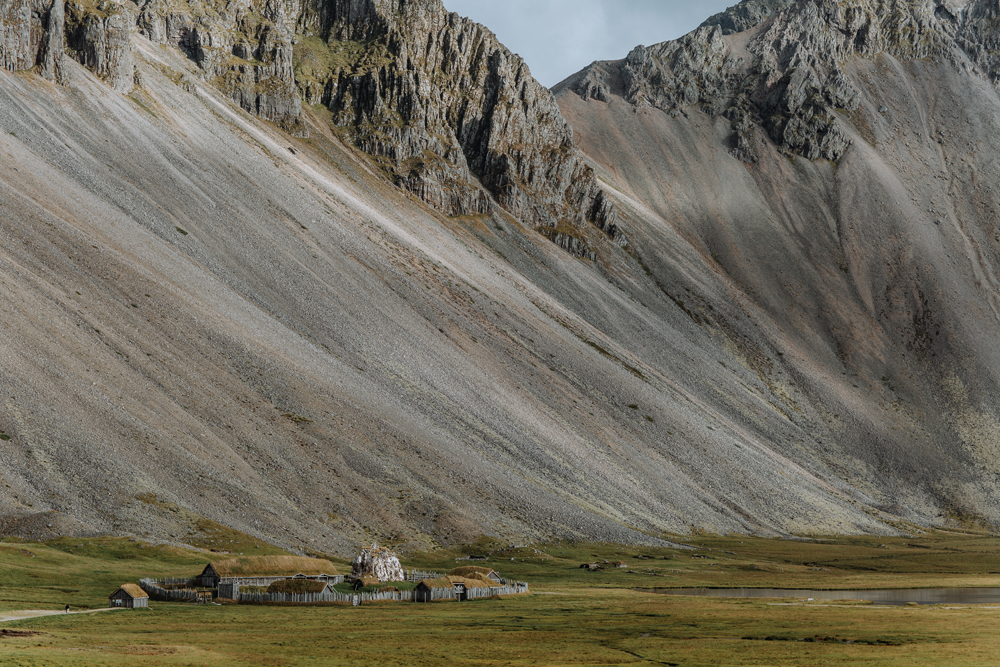Last Updated: February 14th, 2020
The Canon EF 50mm f/1.2L USM Lens is a solid lens for photography of all types. With the ability to be shot wide open at the f/1.2 aperture, it is particularly attractive for portrait photographers.
Like most Canon branded lenses, most elements this lens brings to the table are of a high quality. The lens optics are well designed, and result in some truly stunning images. It is also a tough lens. We’ve put it through a lot – from shooting in bad weather and even dropping it on occasion. And the price? it’s pretty reasonable considering the quality – and more affordable than some other professional grade prime lenses on the market.
This isn’t a lens without some faults, though, and this will be discussed in more detail through the rest of our Canon EF 50mm f/1.2L USM Lens review. While these drawbacks don’t bring it down to a point where we wouldn’t recommend the lens at all – they are things to be aware of going into a purchase.
Why We Bought the Canon EF 50mm f/1.2 Lens
Before we go into more depth about the Canon EF 50mm f/1.2 Lens, we want to talk a little bit about why we bought it, and how we have actually used it.
This lens was one of the first pro grade lenses we bought. As we were growing our photography business, we needed better photography equipment to support us. Upgrading our camera bodies and lenses are no brainers to increase our photo quality to a standard that can reasonably be expected from clients. In particular – for clients like ours that pay a good chunk of change to have photos taken by us.
As you might imagine, our upgrade to the Canon EF 50mm f/1.2 Lens was from the kit lens that had originally came with our old (now unused) Canon Rebel camera. The Canon EF 50mm f/1.8 STM Lens if you care to know.
Our expectations were high when we received this new piece of glass. On cost alone, Canon EF 50mm f/1.2 costs 10 times as much, and at the time we were funding our gear purchases out of our own (pretty broke) pockets.
Comparison Shopping with the Sigma 50mm alternative…
We did a lot of research online before purchasing ourselves. In particular, we compared reviews and image samples between the Canon EF 50mm f/1.2 Lens and third party lens options such as the Sigma 50mm f/1.4 ART Lens.
The Sigma brand is generally well received by photographers – particularly those on a budget. As a general rule, it’s reasonable to compare Sigma to most top-of-the-line camera lens brands like Canon, Nikon, and so forth.
Ultimately, we settled on the Canon – despite the pretty big price difference due to feeling better about what it could provide vs. other options available.
How We’ve Used the Canon EF 50mm f/1.2 Lens
 Since unboxing, this 50mm lens has been with us to every shoot we’ve had. In the least, it’s always in our photography gear bag in case we want to put it to use.
Since unboxing, this 50mm lens has been with us to every shoot we’ve had. In the least, it’s always in our photography gear bag in case we want to put it to use.
We mainly photograph couples portraits in addition to wedding days, families, solo headshots, and so on. Of course, we also explore other aspects of photography when we have down time or while traveling. In particular, we love landscape photography as more of a personal art form, and less a professional one (ie: we don’t really get paid to take these types of shots!).
Early on, the Canon EF 50mm f/1.2 Lens was our primary lens for just about everything. We say this, but at the time we didn’t have many other options given our limited lens selection due to a small budget. The 50mm was the one we wanted to upgrade specifically because of it’s ability to be used in a variety of scenarios more easily than say a 135mm lens.
The 50mm Portfolio Builder
In practice, this lens has performed very well for us. We have grown our portfolio substantially resting on the quality it was able to provide us when used with our Canon 5D Mark IV’s. While quality doesn’t exclusively rest on the gear you are using, it is a contributing factor when paired with good posing and composition techniques.
Now, after more than 2 years of use, the 50mm is less often taken out of our bags. We definitely have preferences for other lenses such as our Canon 85mm f/1.2 Lens. However, it’s not entirely stagnant, and does come out from time to time. There are very specific situations where we absolutely preference it, such as when shooting portraits in a tight hotel room or when working in more crowded spaces where a longer focal length lens would be more of a hassle.
One thing is sure for us, it’s been a worthwhile investment.
Canon EF 50mm f/1.2 USM Lens – Breaking it Down

Technical Specifications
Our core impressions of any camera lens isn’t really built around the technical specs. We’re nerds, but don’t care for all of this detail too much. We care more about the resulting images and ease of use.
Of course, this isn’t to say knowing the technical aspects isn’t valuable when looking to make a purchase. We definitely compared some of these attributes with other lenses we were looking at. In particular, we cared most about the maximum aperture the lens would allow, as we like all the extra stops of light when available as is found here.
- Focal Length: 50mm
- Maximum Aperture: f/1.2
- Lens Construction: 8 elements in 6 groups
- Diagonal Angle of View: 46° (with full-frame cameras)
- Focus Adjustment: AF with full-time manual
- Closest Focusing Distance: 1.48 ft. / 0.45m
- Filter Size: 72mm
- Max. Diameter x Length, Weight: 3.4 in. x 2.6 in./85.4mm x 65.5mm
- 19.2 oz./545g (lens only)
Build Quality
As we have come to learn, nothing about this Canon lens comes across as cheap. From the moment we picked it up out of the box, it is a somewhat heavy and unexpectedly durable lens. While first impressions can sometimes be deceiving, in the case of the Canon EF 50mm f/1.2 USM lens, it has held up surprisingly well over the years. Aside from a few light scratch on the exterior, our lens looks good as new. Given our use of it is demanding, and at times even fairly extreme as we’ve taken it to harsh environments like the sand dunes in Death Valley, we can rightfully say this is a great quality lens!
Focus
Next up, we’re going to talk about this lenses focusing abilities. Much like the Canon 85mm lens we mentioned earlier as one of our favorites – the biggest weakness of this lens comes from it’s imperfect focusing system.
This is one of the areas where most online reviews will tend to differ. From our research on this lenses focusing capabilities, it almost seems some production batches are fine, while others are met with focus problems more consistently.
In our little world, the Canon EF 50mm f/1.2 Lens struggles with getting proper focus and to result in sharp images except when shooting under ideal lighting conditions when being shot at wide apertures. It is actually a significant drawback because a person buying an f/1.2 prime lens wants to shoot at f/1.2 – not f/4 where things will more likely be crisp.
You should understand that, in most contexts, we will not shoot with this lens as low as f/1.2.
Normally, the starting aperture we shoot portraits with is around f/2. We can’t really speak to much to the tech reasons why this is, but it is suitable based on our observations and use. Though, if you want to review some optical math and testing, this is a good article for it.
You need to make the determination of whether or not this consolation decreases the value of the lens too significantly for your own shooting style. For us, our adaptation to shooting at slightly more narrow apertures has enabled more consistency in image quality – and we’re accepting of it for the most part.
How to Shoot at a Very Wide Aperture
With the Canon EF 50mm f/1.2 USM Lens, it is still possible to shoot at f/1.2 and get a well focused and crisp image. There are several techniques we use to do this:
- Shoot with flash. One of the easiest ways to help get a better image when shooting wide open is to use flash. Flash will freeze the scene. This can be done with anything from a cheap Yongnuo speedlite to a far more expensive Profoto A1 (and everything in between).
- Illuminate your subject. If shooting in a low light environment, using an external light source to light your subject is key to getting better focus – no matter your aperture. You can use window light or a static video light to help in this area.
- Use a tripod. Sometimes, missing focus is the result of shaking the camera. This isn’t always really recognizable as a photographer, but can be impactful, especially when dealing with a wide aperture already making it difficult to focus. Setting your camera on a tripod can help remove this issue altogether. You can remote trigger your camera to shoot as well to reduce any shake from pressing the shutter, too.
If you still want to shoot at f/1.2 while hand-holding and without flash, by all means give it a shot. We still do from time to time (though, again, it’s not preferred). When the light is just right, and we are very slow to press the shutter, magic can happen. Do expect a good amount of missed focused or unusable soft images, though.
Image Quality
Out of everything, the most significant thing we look for when judging a camera lens is the image quality. With the Canon EF 50mm f/1.2 USM Lens, the images produced are beautiful when they are properly in focus and clear.
Comparing our original budget kit 50mm lens with this shows a staggering improvement. We never realized just how soft our images used to look, and how much detail was lacking. Of course, for around $100’s – it’s hard to find a better budget lens than the Canon EF 50mm f/1.8 STM Lens. It’s referred to as the “nifty fifty” for a reason.
In this context, the image quality is more a judgment of what you need your lens for.
If you want professional images, you need to pay for a professional grade product.
If you are just a hobbyist, you may be absolutely fine with the quality a cheaper lens has to offer.
For us, as professionals we require a high quality lens that, when used with a good camera body, can output really great images.
In this area, we have no complaints with the Canon EF 50mm f/1.2. The background blur when shot at wide apertures is creamy and seamless. It’s not quite on par with what you would find with a longer focal length lens like the 85mm or a 70-200mm zoom lens, but shouldn’t be expected as better compression comes naturally at longer focal lengths.
The Canon EF 50mm f/1.2 USM Lens vs. The Canon EF 24-70 f/2.8L Lens
There is often discussion of why you would want to purchase a 50mm prime lens such as this you can find a zoom lens that encompasses this focal length for roughly the same price. It’s definitely a valid question.
Our answer is pretty simple, and plays into the logic of our purchasing decisions:
We buy prime lenses when we want wider apertures and crisper images. A static focal length lens is designed from the ground up to produce top notch photos at this length. In terms of these attributes alone, a zoom lens will not compare.
With this said, we also buy zoom lenses. We specifically purchase them for the flexibility they offer. This flexibility is required on some shoots where we don’t have time to switch lenses to get a shot such as when photographing a wedding ceremony. In this case, the Canon EF 24-70 f/2.8L lens is actually very solid. It offers great quality and that flexibility we just mentioned.
If you only can afford one at the moment, you need to ask yourself what your needs really are before making the purchase.
Who is it for?
The Canon 50mm f/1.2 lens is a great choice for portrait photographers. In particular, those willing to live with its downsides because of the great quality it offers when it works as expected.
It is also suitable for shooting landscapes, astrophotography (specifically because of the wide aperture), and other types of photography. The 50mm focal length, while static, is actually the most flexible. It is often the first must-have lens type photographers look to have in their kit, too. These other styles of photography will likely see less impact from focusing and clarity issues as is seen with portraits because they tend to be slower paced and more prone to enabling the use of a tripod to help counteract some of the issues.
Final Thoughts
We can recommend the Canon EF 50mm f/1.2 Lens despite it’s caveats.
It’s not a perfect lens by any means, but it is a great lens in our experience.
Our one wish is that the price would come down a bit from the current ~$1,200 price tag to be more competitive with the Sigma 50mm alternative. Priced around $800 – $900, and this would easily be a must have for every photographer. Unless you catch it on sale (rare) or with a rebate (more common), you may want to wait on this. With that said, if you have very specific shooting needs that would benefit from a wide aperture prime 50mm lens like this, the purchase, even at the $1,000+ cost is still worth it – as it has been for us.
Where to Buy the Canon EF 50mm f/1.2 Lens
If you would like to purchase the Canon EF 50mm f/1.2 Lens based on what you’ve read here, consider purchasing on Amazon using the links found here.
Amazon has competitive prices on photography lenses and other equipment. The added benefit? Your purchase provides us with a commission that is used towards producing future valuable content like this on our website.
We have done the majority of our big photography gear shopping here due to prices, the availability of same priced “kits” (often come with camera bags, lens cleaning supplies, SD cards, etc.), and access to 2 day shipping with Amazon Prime.
If you setup an Amazon Business Account, there are occasionally small discounted rates on some products from time to time as well. It’s hard to say if lenses will be classified like this at some point, but it’s a free sign up. This makes it worth checking out in our book before actually clicking “buy.”
Our Sample Images
The following selection of images were taken with the Canon EF 50mm f/1.2 Lens paired with a Canon 5D Mark IV body. You can expect comparable image quality on a similar setup. If using an inexpensive camera body, you will still have better images than on a cheaper lens. But, do be aware your bodies tech will limit the quality to some extent.



